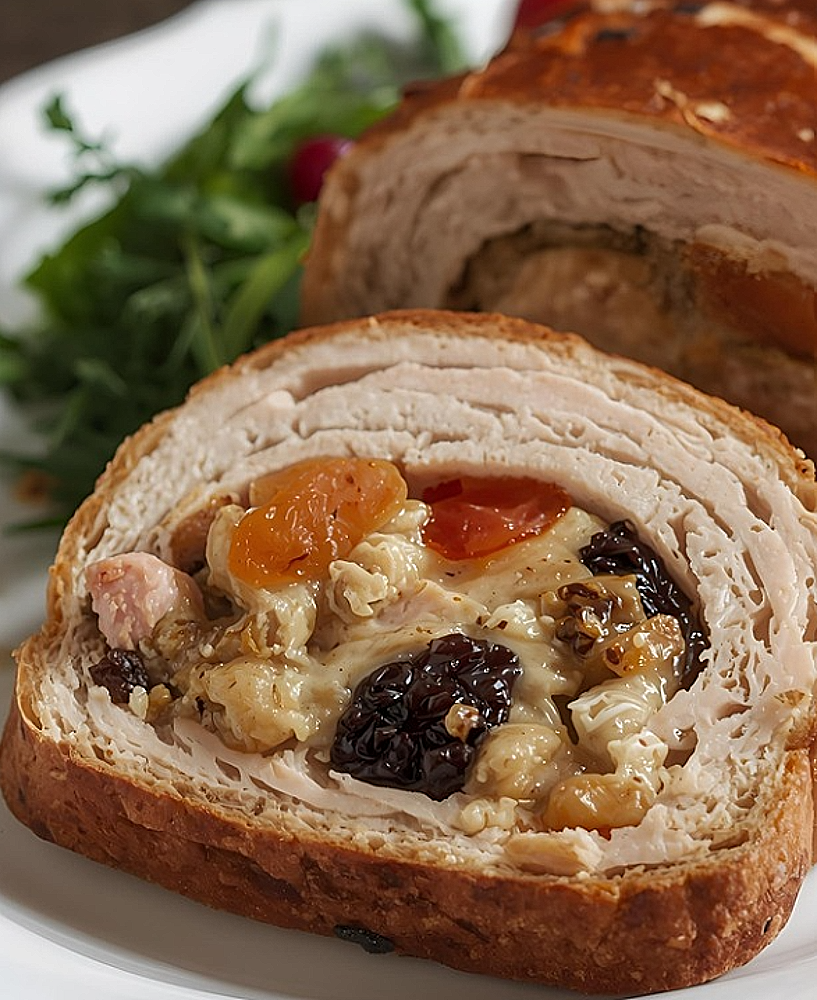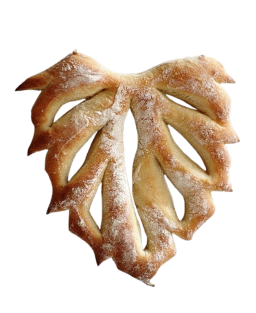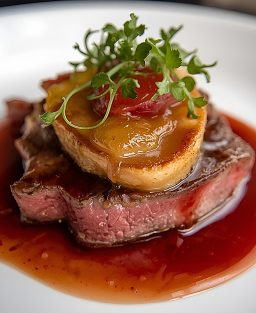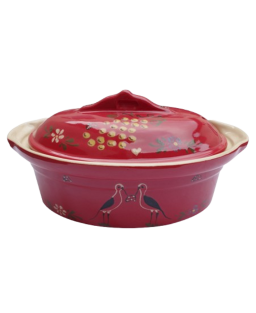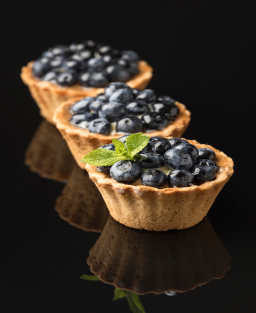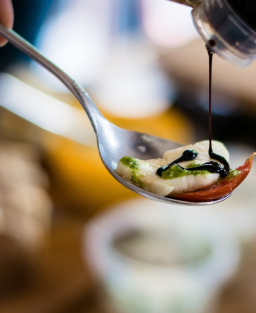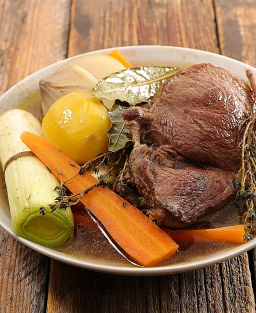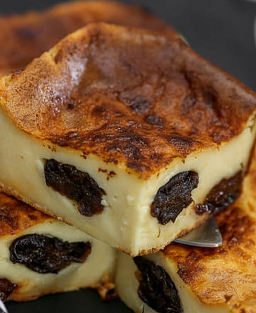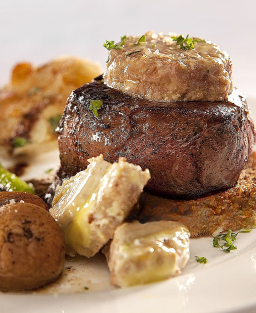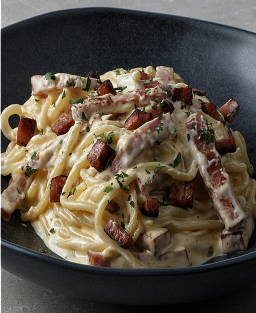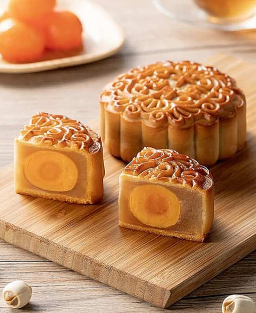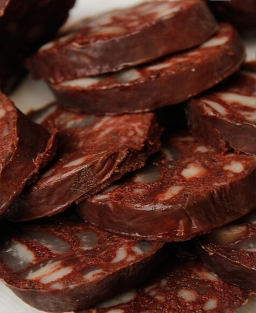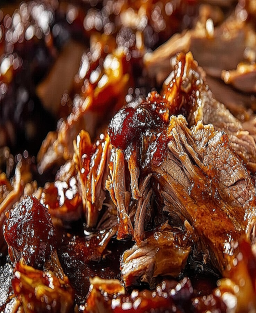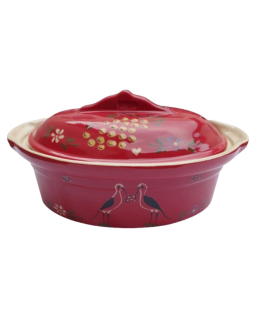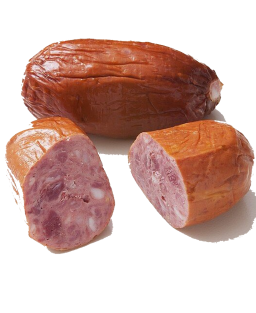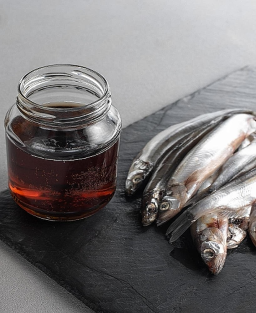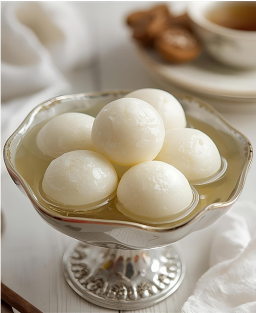Recipe of "La Pâté de Chapon"
Recipe of "La Pâté de Chapon"
History, traditional preparation, and regional variations – Festive and refined medieval French recipe
Discover the traditional recipe of La Pâté de Chapon, a refined medieval dish stuffed with spices and dried fruits, baked in pastry for grand occasions and Christmas celebrations. A true symbol of culinary prestige, this dish illustrates the art of 15th-century French gastronomy.
History and historical context
In the 15th century, in France, capon pâté stuffed with dried fruits was commonly served at royal banquets and Christmas feasts. This festive dish, reserved for the elite, reflected wealth, refinement, and culinary expertise.
The dried fruits — prunes, raisins, apricots — were chosen not only for their taste but also for their symbolic value, representing prosperity and abundance of the harvest. The capon, a castrated rooster raised for its tender meat, was the centerpiece of these lavish meals.
Its complex preparation — partial deboning, elaborate stuffing, and baking in pastry — made it a prestigious dish, requiring mastery of rare spices and advanced cooking techniques.
15th-century cookbooks, such as Le Viandier by Taillevent, attest to the central role of this dish in Christmas banquets and royal meals, confirming its emblematic place in medieval gastronomy. The tradition continued until the end of the Middle Ages and inspired poultry and game pâté recipes in the following centuries.
Historical anecdote
“Quant li pasté de chapon estoit mis au feu, l’odeur emplissoit toute la salle du seigneur, et faisoit jolis yeux aux convives.”
(Old French)
This quote illustrates the sensory and festive impact of the dish, capable of captivating guests with its rich, spiced aromas.
Country and region of origin
-
Country: France
-
Region: Île-de-France and royal regions
-
Evolution: The original recipe, rich in spices and dried fruits, gradually evolved into lighter versions, sometimes without pastry, or with simplified fillings, incorporating modern cooking techniques and gastronomic presentations.
Evolution and iconic chefs
-
Origin and history: The capon pâté appeared in the 15th century at French aristocratic banquets, meant to demonstrate wealth and refinement, combining stuffed capon, shortcrust or puff pastry, and rare imported spices.
-
Evolution: Reduction of costly spices, adaptation of fillings according to seasonal and local availability, integration into contemporary festive cuisine.
-
Iconic chefs:
-
François Vatel: refinement in capon cooking and spice selection.
-
Antonin Carême: perfection of puff pastry and elaborate decoration.
-
Auguste Escoffier: simplification of techniques, adaptation to modern kitchens.
-
Recipe description
The capon is cleaned and partially deboned, then stuffed with a mixture of noble meats (veal and pork), dried fruits, eggs, and spices. Baking is done in golden pastry, balancing sweet and savory flavors. The presentation is festive and voluminous, with the crust decorated with symbolic or floral motifs.
Ingredients
-
Whole capon (3–4 kg), raised for tender meat
-
Lean veal (shoulder or breast): 250 g
-
Pork belly or fatty bacon: 150 g
-
Capon offal (liver, heart, gizzard): 150 g
-
Dried fruits: prunes, raisins, apricots, 200 g
-
Spices: pepper, cinnamon, nutmeg, ginger
-
Herbs: parsley, sage, rosemary
-
Eggs: 4 whole for the stuffing
-
Puff or shortcrust pastry: 1.5 kg
-
Salt, pepper
Preparation
1. Prepare the bird: cleaning and deboning
-
Pluck and clean
-
Remove all remaining feathers and down.
-
Wash skin carefully with cold water and pat dry.
-
-
Clean and prepare the offal
-
Remove the innards and separate the liver, heart, and gizzard for the stuffing.
-
Remove any membranes, veins, or impurities and keep in a cold bowl.
-
-
Deboning – open breast technique
-
Cut along the sternum and open the breast.
-
Remove bones: keel, sternum, thigh, and wing bones while keeping general shape.
-
Check that no residual bones remain.
-
-
Finishing touches
-
Smooth the skin with a small knife to prevent tears during stuffing.
-
Inspect meat and remove any remaining membranes or nerves.
-
Place the capon on a cold work surface for assembly.
-
2. Prepare the noble stuffing: chopping and binding
-
Select and prepare meats
-
Lean veal (shoulder or breast): 250 g, remove skin and sinews.
-
Pork belly or fatty bacon: 150 g, trim if necessary.
-
Chop separately using a fine grinder (6 mm) for balanced texture.
-
-
Add offal and aromatics
-
Finely chop liver, heart, and gizzard.
-
Incorporate dried fruits (prunes, raisins, apricots), diced evenly or whole depending on size.
-
Add finely chopped fresh herbs (parsley, sage, rosemary).
-
-
Season and bind
-
Salt and pepper; add cinnamon, nutmeg, and ginger for a noble aroma.
-
Mix in 3–4 whole eggs to bind and create a smooth emulsion.
-
-
Mix and finalize texture
-
Mix by hand or with a hook until the stuffing is homogeneous, smooth, and slightly elastic.
-
Check density: stuffing should hold inside the bird without compacting unevenly.
-
3. Stuff the capon: assembly and density
-
Fill the cavity
-
Gradually add stuffing, pressing lightly to remove air pockets.
-
Ensure even distribution of dried fruits and herbs.
-
-
Close and secure
-
Fold the skin carefully to cover the stuffing completely.
-
Check for uniform density.
-
4. Cover and shape pastry: assembly, baking, and decoration
Prepare the pastry
-
Roll puff or shortcrust pastry to 5–7 mm thickness on a floured surface.
-
Check flexibility to wrap the bird without tearing.
Wrapping, moulding, and sealing
-
Place stuffed capon in the center of the pastry.
-
Carefully put in a lightly greased or lined mold.
-
Fold pastry over the bird and seal edges with beaten egg.
-
Make steam vents or cuts on top.
Decoration
-
Create floral or symbolic motifs.
-
Brush generously with egg wash for a shiny, uniform crust.
5. Baking: temperature and humidity control
Oven preparation
-
Preheat to 160–170 °C (fan or conventional).
-
Place mold on a tray and lightly cover if necessary.
Slow, gradual baking
-
Bake for 3–4 hours depending on total weight (capon + pastry).
-
Gentle cooking to cook stuffing thoroughly without drying pastry.
-
Check internal temperature: at least 75 °C with probe thermometer.
Finishing
-
Remove covering 20–30 min before end for even browning.
-
Do not baste with juices; pastry should retain them.
-
Rest 15 min before slicing.
6. Slicing and serving: charcuterie technique
-
Resting
-
Let rest 5–10 min to stabilize juices.
-
-
Slicing
-
Use a long, thin knife for 2–3 cm slices.
-
Ensure stuffing remains compact and crust intact.
-
-
Serving
-
Serve hot or warm, rustic or gourmet style.
-
Accompany with seasonal garnishes, mashed potatoes, chestnuts, or reduced sauce.
-
Regional variations
-
Nice-style: thin pastry, light stuffing, no dried fruits.
-
Escoffier version: golden pastry, stuffing enriched with foie gras and truffle.
-
Modern version: sous-vide cooking, oven finishing, simplified stuffing, minimal decoration.
Tips and advice
-
Do not overfill to prevent pastry rupture.
-
Maintain constant oven temperature.
-
Choose a well-marbled capon for moistness and flavor.
Service and presentation
-
Rustic: on wooden platter, seasonal garnishes around.
-
Gourmet: individual portions, reduced sauce on the side.
-
Classic sides: vegetable purée, chestnuts, wine or foie gras sauces.
Wine and beverages
-
Full-bodied red wine: Bordeaux or Burgundy, medium vintage
-
Beverages: mineral water or juice for festive version
Nutrition facts (per 300 g portion)
-
Calories: 750 kcal
-
Fat: 45 g
-
Carbohydrates: 30 g
-
Protein: 50 g
-
Fiber: 5 g
-
Allergens: eggs, gluten, nuts
-
Adaptations: gluten-free pastry, remove dried fruits for allergies, vegetarian not applicable
Glossary
-
Stuffing: mixture of meats and aromatic ingredients to fill the bird.
-
Partial deboning: removing certain bones while maintaining structure for cooking.
-
Hygrometry: measure of internal moisture of food.
-
Sous-vide cooking: slow cooking in sealed bag at controlled temperature.







